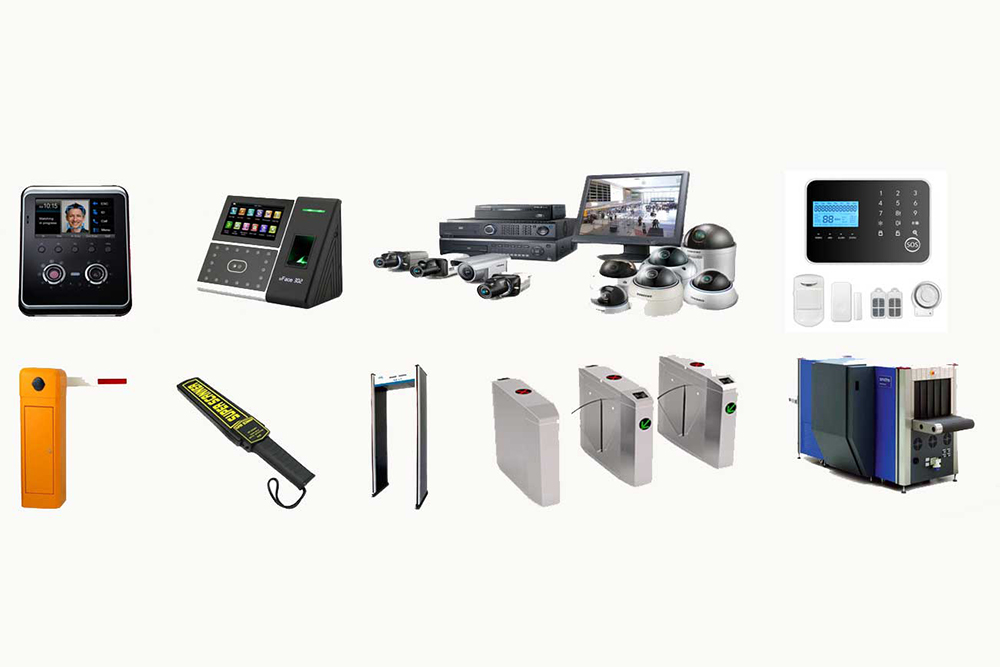BQT Sideload Locks: Superior Security Solutions for Modern Demands
BQT Sideload Locks: Superior Security Solutions for Modern Demands
Blog Article
The Future of Safety And Security: Discovering the most up to date Patterns in Electronic Safety And Security Technologies
Electronic safety and security technologies have become progressively sophisticated, offering cutting-edge solutions to deal with the ever-growing obstacles faced by people and organizations alike. From biometric verification to the combination of fabricated intelligence and device knowing, these fads hold the pledge of enhancing safety steps in unmatched means.
Increase of Biometric Authentication
With the raising requirement for safe and practical authentication methods, the increase of biometric verification has revolutionized the way individuals access and secure their sensitive details. Biometric authentication uses unique biological characteristics such as finger prints, facial functions, iris patterns, voice acknowledgment, and also behavioral traits for identification verification. This innovation uses a much more reliable and protected approach contrasted to traditional passwords or PINs, as biometric data is unbelievably hard to duplicate or swipe.
Among the vital benefits of biometric verification is its convenience. Users no more require to keep in mind complex passwords or stress over shedding gain access to due to neglected credentials. By merely using a part of their body for confirmation, individuals can promptly and firmly gain access to their gadgets, accounts, or physical rooms.
In addition, biometric authentication enhances safety by offering an extra durable protection against unauthorized accessibility. With biometric pens being distinct to each person, the danger of identification theft or unapproved entrance is dramatically decreased. This heightened level of protection is specifically critical in fields such as finance, medical care, and federal government where securing sensitive info is vital.
Assimilation of AI and Artificial Intelligence
The development of digital safety and security innovations, exemplified by the rise of biometric verification, has led the way for developments in the assimilation of AI and Machine Knowing for boosted recognition and security devices. By leveraging AI algorithms and Artificial intelligence models, electronic safety systems can now evaluate large quantities of data to find patterns, anomalies, and potential risks in real-time. These innovations can adjust to advancing security dangers and offer aggressive feedbacks to reduce risks effectively.
One substantial application of AI and Artificial intelligence in electronic safety and security is in predictive analytics, where historical data is utilized to anticipate possible safety and security breaches or cyber-attacks. This aggressive method permits safety and security systems to expect and stop risks prior to they happen, boosting total safety and security measures. Furthermore, AI-powered security systems can wisely keep track of and analyze video feeds to recognize suspicious activities or individuals, improving response times and reducing incorrect alarms.
IoT and Smart Safety Instruments
Innovations in electronic security innovations have actually brought about the introduction of IoT and Smart Protection Instruments, revolutionizing the way safety and security systems operate. The Web of Things (IoT) has made it possible for safety tools to be interconnected and from another location accessible, supplying improved monitoring and control capacities. Smart Security Gadgets, such as smart video cameras, door locks, and movement sensors, are furnished with performances like real-time alerts, two-way communication, and combination with various other smart home systems.
One of the significant advantages of IoT and Smart Safety Instruments is the ability to give customers with seamless accessibility to their safety and security systems through smartphones or other internet-connected tools. This convenience enables remote monitoring, equipping, and disarming of protection systems from anywhere, providing property owners with satisfaction and versatility. Additionally, these gadgets often integrate sophisticated features like facial acknowledgment, geofencing, and task pattern acknowledgment to enhance total protection degrees.
As IoT proceeds to develop, the combination of fabricated intelligence and machine discovering algorithms into Smart Protection Instruments is anticipated to more improve discovery accuracy and personalization alternatives, making electronic protection systems a lot more reliable click here for more and reliable.
Cloud-Based Protection Solutions
Emerging as a crucial aspect of modern digital security infrastructure, Cloud-Based Safety check my blog Solutions provide exceptional adaptability and scalability in safeguarding digital possessions. Cloud-based protection solutions allow remote monitoring, real-time alerts, and streamlined management of security systems from any kind of location with a web connection.
Furthermore, cloud-based safety options provide automated software updates and upkeep, making certain that safety and security systems are constantly updated with the newest protections versus arising risks. In general, cloud-based safety remedies represent a cost-efficient and reliable means for services to enhance their safety stance and secure their electronic assets.
Focus on Cybersecurity Actions
With the raising refinement of cyber risks, services are putting a paramount concentrate on strengthening their cybersecurity procedures. BQT Sideload locks. As innovation developments, so do the techniques used by cybercriminals to breach systems and steal sensitive info. This has actually prompted companies to spend heavily in cybersecurity procedures to protect their data, networks, and systems from destructive assaults
Among the crucial trends in cybersecurity is the adoption of innovative security procedures to safeguard data both at remainder and in transportation. Encryption assists to guarantee that also if information is intercepted, it continues to be unreadable and protected. Furthermore, the application of multi-factor authentication has actually come to be progressively common to include an extra layer of safety and validate the identifications of users accessing delicate information.

Conclusion

Report this page